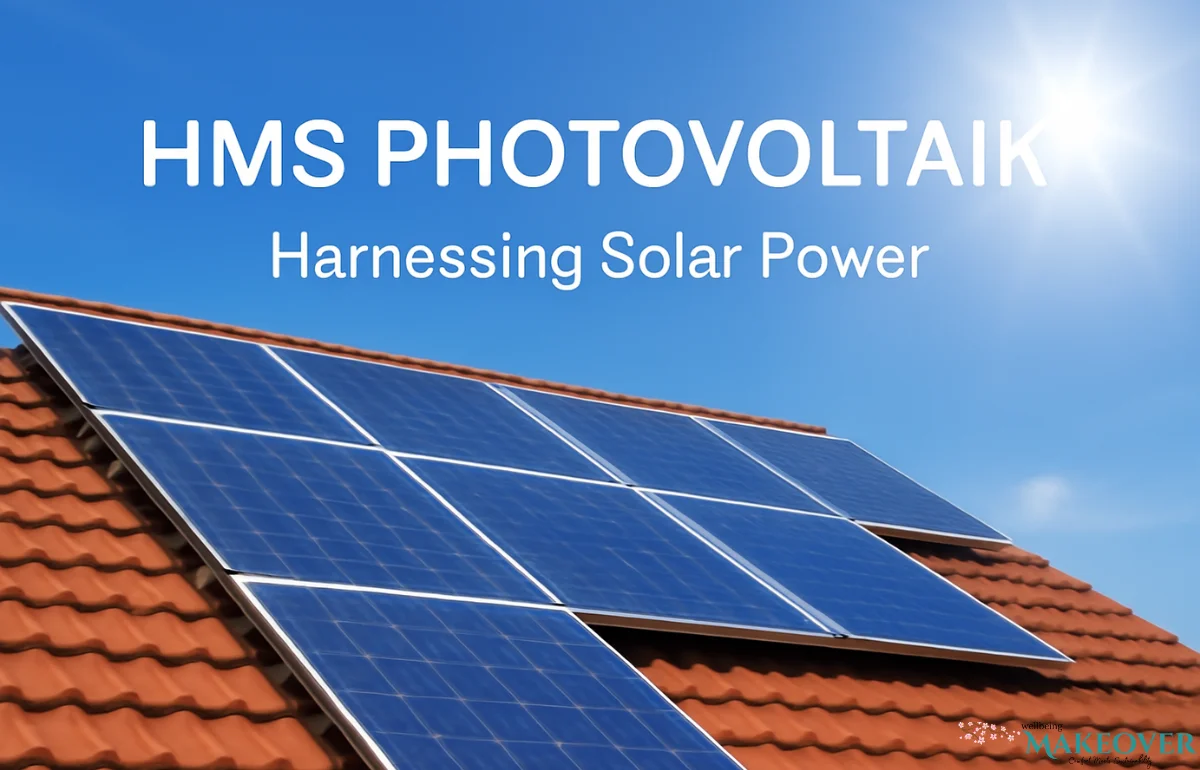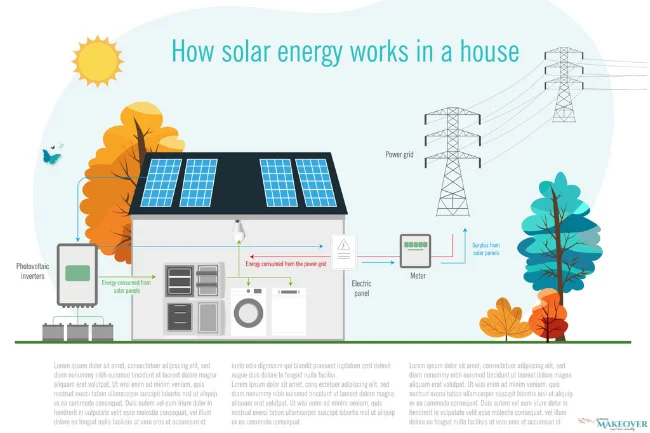
If the rising cost of utilities and the growing conversation around sustainability have you thinking about making a big change, you’re not alone. Homeowners and businesses worldwide are seeking viable, long-term solutions, and that brings us to the forefront of solar technology: HMS Photovoltaik. This powerful and intelligent approach to solar energy conversion isn’t just about putting panels on a roof; it represents a commitment to energy independence and a massive reduction in operational expenses.
Imagine turning the free, abundant energy of the sun into clean electricity right on your rooftop. HMS Photovoltaik systems make this a reality. They are tailored to meet the growing need for both environmental responsibility and financial savings. This guide will walk you through the essential facts about this cutting-edge solar technology, its components, benefits, and what you need to know before making the switch to a greener, more self-sufficient energy future.
Decoding the Technology Behind HMS Photovoltaik
At the heart of any solar system is the photovoltaic cell. Made from semiconductor materials, typically silicon, these cells are the magic converters. When sunlight (photons) strikes the cell, it excites the electrons, causing them to flow and generate a direct current (DC).
The Microinverter Advantage in HMS Photovoltaik Systems
The electricity generated by the panels—DC power—is not immediately compatible with standard home or commercial appliances, which run on alternating current (AC). The conversion process begins with the inverter.
HMS Photovoltaik systems often leverage a Module-Level Power Electronics (MLPE) approach, specifically through microinverters. Instead of converting power for the entire solar array at one central point (a string inverter), a microinverter is placed directly beneath, or integrated with, each individual solar panel.

This per-panel conversion offers three significant advantages that elevate HMS Photovoltaik performance:
- Maximum Power Point Tracking (MPPT): It optimizes the output of each panel independently.
- Shade Mitigation: If one panel is shaded by a chimney or debris, its underperformance does not drag down the output of the neighboring panels.
- Enhanced Safety: It converts the high-voltage DC power to safe, low-voltage AC power right on the roof, eliminating the need to run dangerous high-voltage lines into the building.
Long-Term Value and Benefits of Solar Photovoltaik Solutions
The shift to renewable energy sources is driven by both environmental necessity and compelling economic realities. An advanced HMS Photovoltaik system delivers on both fronts, providing substantial returns over its expected 25+ year lifespan.
Financial Benefits of Adopting HMS Photovoltaik
The financial returns are often the most immediate and attractive draw for homeowners and businesses investing in solar power systems.
- Significant Savings on Electricity Bills: Generating your own power means a massive reduction in the energy you purchase from the utility company. This immediately offsets the cost, offering a strong return on investment (ROI).
- Net Metering Opportunities: In many regions, the utility company credits you for excess electricity your panels produce and send back to the grid. This net metering policy essentially turns your system into a revenue generator, banking credits to use when the sun isn’t shining.
- Increased Property Value: Properties with owned solar installations often sell faster and at a higher price than comparable non-solar homes.
How Solar Contributes to a Lower Carbon Footprint
Choosing solar directly addresses concerns about fossil fuels and carbon emissions. Every kilowatt-hour you generate is clean energy, significantly reducing your reliance on traditional, polluting power plants. This transition allows you to play a direct, measurable role in combating climate change and achieving a lower carbon footprint for your household or company.
Selecting the Right Solar Modules for Your Photovoltaik Array
Before committing to a provider, it’s crucial to understand the different types of solar panels available. The choice typically depends on your budget, available roof space, and aesthetic preference. All types can be integrated into an efficient HMS Photovoltaik system.
Panel Comparison for Optimal System Design
| Panel Type | Material Composition | Key Feature | Efficiency Range | Best-Suited For |
| Monocrystalline (Mono) | Single, pure silicon crystal | Highest efficiency, sleek black look | 18% – 22%+ | Limited roof space where maximum output is essential. |
| Polycrystalline (Poly) | Multiple melted and molded silicon fragments | More cost-effective manufacturing process | 15% – 17% | Large installations or budget-conscious projects with ample space. |
| Thin-Film | Amorphous silicon, Cadmium Telluride (CdTe), or others | Lightweight, flexible, requires less material | 11% – 13% | Utility-scale solar farms or unique, curved architectural surfaces. |
Monocrystalline panels are the high-efficiency choice, ideal for maximizing production on smaller rooftops. Polycrystalline panels are a solid, budget-friendly option, while thin-film solar panels offer architectural flexibility, though they require a larger area to generate the same amount of power.
Planning Your HMS Photovoltaik Installation
Making the decision to adopt HMS Photovoltaik is the first step; the next involves careful planning and ensuring the long-term health of your photovoltaic system.
Essential Pre-Installation Steps for a Smooth Photovoltaik Setup
- Evaluate Energy Consumption: Review past electricity bills to determine your annual usage and accurately size the system (measured in kilowatts, or kW). Oversizing or undersizing the array can impact your return.
- Site Assessment: A professional will determine your roof’s pitch, orientation, structural integrity, and critically, identify any potential shading issues. This assessment is vital for ensuring the panels receive maximum sunlight exposure throughout the day.
- Financing and Incentives: Research local and federal tax credits, rebates, and other solar incentives designed to lower the overall upfront cost of the project.
Maintenance for Lasting HMS Photovoltaik Performance
Solar systems are incredibly reliable and low-maintenance, but periodic care ensures maximum energy production.
- Routine Visual Checks: Periodically check the panels from the ground for debris, heavy dirt buildup, or visible damage.
- Cleaning: While rain often provides sufficient cleaning, manual washing with a hose and soft brush a few times a year can be beneficial, especially in dry, dusty climates. Always clean the panels when they are cool, such as in the early morning.
- Performance Monitoring: Use the system’s dedicated software or app to monitor panel-level output. A sudden drop in production can signal a problem like shading or component failure, which can be quickly addressed thanks to the microinverter’s granular data.
- Professional Servicing: Schedule a comprehensive check by a certified solar electrician every five years to inspect wiring, the mounting system, and the inverters.
Conclusion: Powering a Brighter Tomorrow with HMS Photovoltaik
HMS Photovoltaik represents the smart evolution of solar technology, offering superior performance, enhanced safety, and greater scalability through its module-level power electronics. For the modern homeowner or forward-thinking business, investing in such a renewable energy solution is a powerful financial decision that safeguards against rising utility prices while simultaneously providing a positive environmental impact.
The future of energy is distributed, clean, and right on your roof. Don’t let your energy consumption remain a passive expense; turn it into an active asset. Take the first step today by contacting a local, certified solar installer to get a personalized assessment and begin your journey toward energy independence.
FAQs About Solar PV
1: What does the ‘HMS’ in HMS Photovoltaik typically refer to?
While ‘Photovoltaik’ simply means converting light to electricity, the ‘HMS’ is often associated with specific manufacturers or system designs that emphasize high-efficiency Microinverter Systems. These systems ensure that each solar panel operates independently at its peak performance, a key feature that distinguishes them from older, centralized string inverter setups.
2: Will my solar panels produce power during a grid blackout?
Most standard grid-tied photovoltaic systems are legally required to shut down during a blackout (an anti-islanding feature) for the safety of utility workers. To maintain power during an outage, you would need to integrate a solar battery storage system (like a home battery) that can safely disconnect from the grid and power your home’s essential loads.
3: What are LSI keywords, and how are they used in this content?
LSI, or Latent Semantic Indexing, keywords are words and phrases semantically related to the main topic. In this article on HMS Photovoltaik, LSI terms include renewable energy solutions, carbon footprint, net metering, microinverters, photovoltaic cells, energy independence, and upfront cost. They help search engines understand the full context and authority of the article.
4: Is the initial cost of a microinverter system worth the price?
While systems utilizing microinverters may have a higher initial cost per watt compared to standard string inverter systems, the long-term benefits typically make them more cost-effective. These benefits include greater energy production (especially in shaded conditions), a longer component warranty (often 25 years), and enhanced safety due to lower voltage DC wiring, leading to a faster total return on investment (ROI).
5: How does weather, like snow or extreme heat, affect the efficiency of solar PV?
With modern construction, solar panels can readily handle extreme weather. Snow will temporarily stop production until it slides off, though the black color of the panels often aids melting. Extreme heat can slightly reduce a panel’s efficiency—a metric known as the temperature coefficient—but high-quality panels are designed to minimize this impact and perform reliably even in harsh climates.
I’m Salman Khayam, the founder and editor of this blog, with 10 years of professional experience in Architecture, Interior Design, Home Improvement, and Real Estate. I provide expert advice and practical tips on a wide range of topics, including Solar Panel installation, Garage Solutions, Moving tips, as well as Cleaning and Pest Control, helping you create functional, stylish, and sustainable spaces that enhance your daily life.
